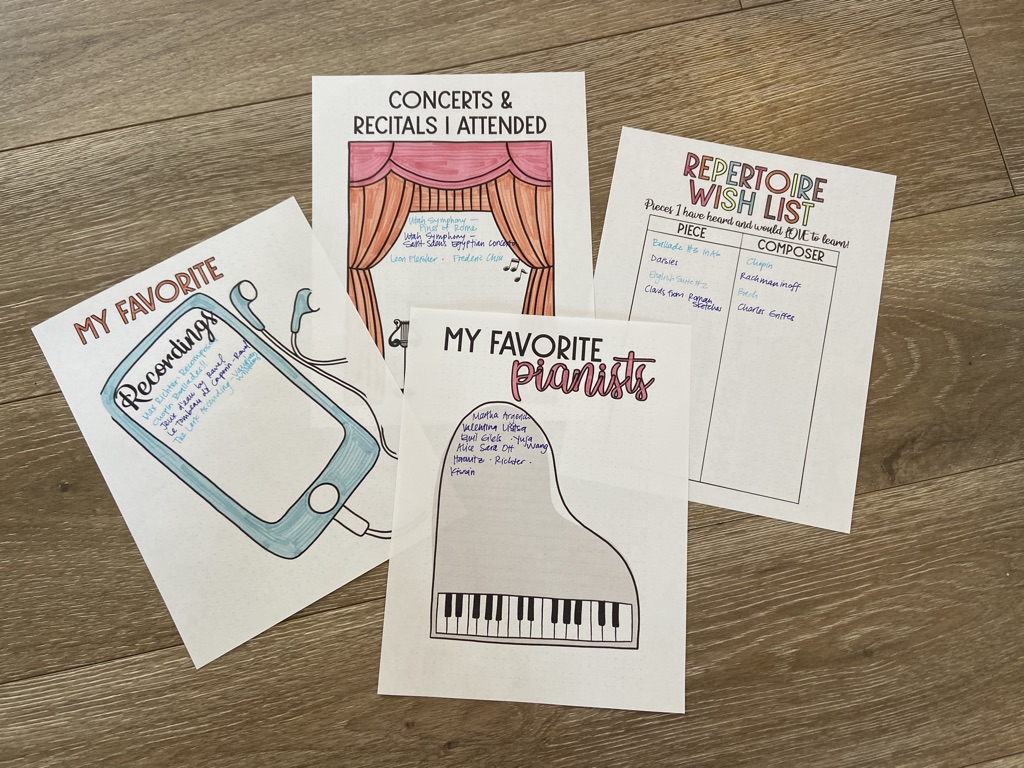Teaching Fugues
Based on my blog post originally published on April 30, 2011. For my 10-year blogiversary I am re-sharing 10 favorite blog posts!

Fugues can be some of the most beautiful and rewarding pieces to learn as a pianist, but are also some of the most challenging to learn and to perform well. A pianist who is able to learn a fugue well is a pianist who is a careful and efficient practicer and a musician who has trained their ears well to listen to the sounds and dynamics coming out of the piano. One must possess good independence of hands and fingers to play a fugue well. All of these more advanced skills are difficult to learn, but are so important to the development of a fine pianist. A piano student who is able to learn a fugue is well on their way to becoming a great musician, and the proper learning of fugues can help refine their ear and their practicing skills if they are willing to put in some effort!
I’d like to share a few tips on how to teach (and to learn!) fugues; hopefully some of them will come in handy, and hopefully others will have tips of their own to share!
First of all, what are some good, easier fugues to start out with? Although not necessarily fugues, the Bach Two-Part Inventions and Three-Part Inventions are excellent to start with! Because many fugues have four or five parts, it is great to begin with only two parts to keep track of. I started learning inventions in junior high – I’d say they are probably late-intermediate (depending on the invention!).
Bach’s Well-Tempered Clavier is an excellent collection of preludes and fugues that every pianist should be familiar with. I would say that a good one to begin with would be either Fugue No. 2 in C minor (Book 1) or Fugue No. 21 in B-flat Major (Book 1). Of course there are many other fugues out there by Bach and other composers.
Tips for Learning a Fugue
- Analyze – find the theme and mark it whenever it appears in any voice with a colored pencil or highlighter. You may also want to mark any thematic material that is similar to the theme, but not the theme exactly. Since there are so many different voices going on at once, it is imperative that you know which voice to bring out at any time. You want to be able to hear the theme whenever it appears, not just the top voice in the right hand.
- Listen to recordings – I always find this helpful when just starting out learning a fugue. I like to listen to a good recording while following along in the music and marking different voices and statements of the theme.
- Write in the fingerings! – I like to go through the piece and decide from the very beginning which fingerings to use. There will be so much going on during the piece that you want to have solid fingerings right from the beginning. This will help you to learn the fugue so much faster and more efficiently. Always use the same fingerings, each time you practice!
- Start learning the fugue! – Oh yes, did I mention that it is good to have all of these things done and written in before you actually start to practice the piece? With a fugue especially, it’s good to have a solid plan before getting started.
- Learn in very small sections – this will help you to learn correct notes, fingerings, rhythms, and phrasing as you go. A fugue can be a little daunting to learn, but if you take it in very small bites it is very doable!
Analyzing a Fugue
So, for the purpose of this post, I made a copy of Bach’s Fugue No. 2 in C minor from the Well-Tempered Clavier (Book 1) and pretended like I was about to learn it (I actually learned it years ago…). Here is what I might do if I were to start learning this today. Here are the first two pages for your enjoyment Oh and my analysis is, of course, very technical (not!) – but I basically just wanted to give you some ideas.
First, I have highlighted the theme, every time it occurs in its full form, in yellow. I want to bring that out so you can hear it in each voice.
Next, I bracketed or highlighted other thematic material in blue. Sorry it’s a little hard to see – there is some on the last line of page 1, some on line 2 of page 2, and other random bits of it scattered throughout. These are sections that are very close to the theme, but that vary a bit.
Then I discovered this little secondary theme made up of eighth notes in a pattern of three notes slurred and one note staccato (know that this articulation will vary a LOT depending on your edition or on the pianist who made the recording you listen to!), and marked it with a purple star whenever that occurred. Although secondary to the main theme, this stuff is also important and should come out a bit, especially if there is no theme going on as well.
And lastly, there is a bunch of other stuff going on, such as long sections of sixteenth note material, which I marked with a brown bracket. At a lot of these sections, I would probably bring these sixteenth note phrases out with some graded dynamics and nice phrasing of some sort.
Anyway, you get the general idea! I would listen to several recordings of this to hear different interpretations, because they will vary so much depending on the pianist.
What fugue-learning-tips-o-awesomeness do you have to add to the list?

















































